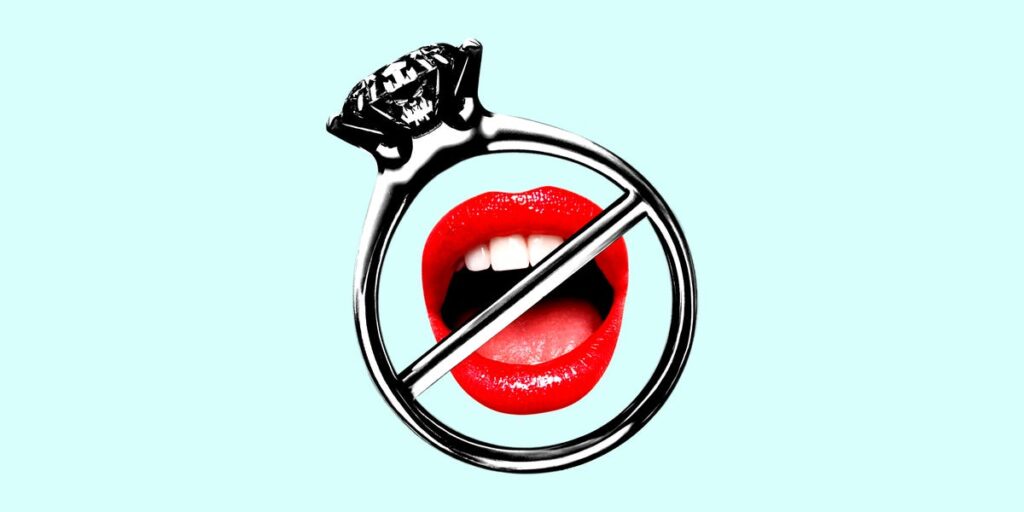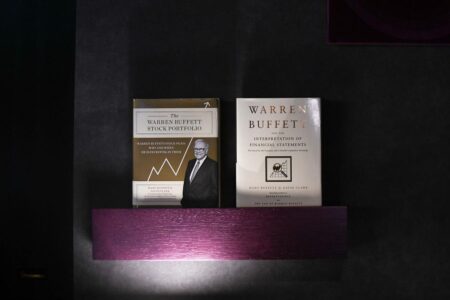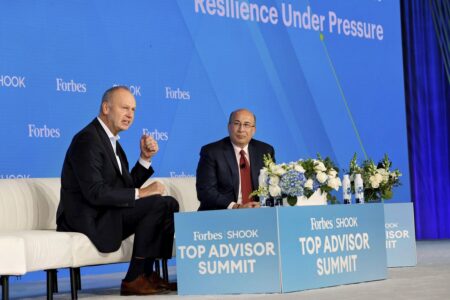When Monica Millington got engaged for the first time, she felt like she had been begging her then-partner to propose.
Ten years ago, 33-year-old Millington, the founder of the clothing brand Sette, a content creator, and a soon-to-be podcast host, was in a long-distance relationship that felt like it was going nowhere.
“I was in a young relationship with a decent guy, and we just were not a good match,” Millington told Business Insider.
“I could go months without FaceTiming him,” she said. “I had to beg to even arrange a trip to see each other when money wasn’t a problem.”
When she did get to see her partner, Millington didn’t feel the connection she hoped she would. After years of unhappiness, she said she started seeing marriage as a way to solve their problems.
“I got to the point where I was literally begging to get married,” she said, though her partner showed no interest in proposing, writing off Millington’s comments as “dramatic.” But after pressure from her and their friends, he eventually gave in.
“He gritted his teeth and proposed to me,” she said.
But nothing changed in their relationship once they were engaged — or married.
The ‘shut-up ring’
Shortly after they got married, Millington said she realized that her then-husband had not wanted to.
“I looked back, and I was like, ‘Oh my God, I don’t think he even wants me here. What am I doing here?'” she said. “And all the cracks of the relationship started to show.”
The marriage ended just three years later. Today, Millington is happily remarried and has a 1-year-old. She looks back on her first marriage with compassion for her younger self.
“It’s so sad, looking back, that 23-year-old me who had my whole life ahead of me and all these dreams and ambitions was just sitting there waiting for someone to pick me,” she said.
TikTokers even coined a phrase for situations like Millington’s: a shut-up ring.
If you search the term on TikTok, you’ll find a video of a woman asking others how they got their partner to want to get married after years of a relationship not moving forward, as well as clips of what others perceive to be imbalanced relationships, like a groom aggressively shoving cake into his bride’s face. The circumstances vary, but the phrase collectively describes a proposal that didn’t come from joy or a mutual decision to spend a life together.
Landis Bejar, a wedding therapist and the founder of AisleTalk, told Business Insider she had seen the dynamic of couples who end up with shut-up rings long before the term was used on social media, and it’s rarely a good way to start a marriage.
She said the rings are “used to pacify or relieve some pressure that’s going on in a relationship” instead of symbolizing a step a couple wants to take together.
“It’s an early indicator that the couple can’t talk about hard things and can’t work through hard things, and instead, one person decides to appease the other person instead of voicing how they really feel about it,” Bejar said.
It takes two
It’s easy to look at videos related to shut-up rings and assume the person who proposes is the villain of a relationship.
But Bejar told BI it’s important to acknowledge that these situations often arise when both partners don’t communicate what they want from their relationship.
“You gotta have conversations where you allow the other person to be honest about how they feel,” Bejar said. “This doesn’t have to be an aggressive conversation. It can be warm and loving and filled with hope. But you gotta talk about it.”
Millington echoed Bejar, saying she found happiness with her current husband because she wasn’t afraid to be clear about what she wanted.
“With my wonderful, amazing husband of seven years, I walked into it being like, ‘I’m here. This is who I am. This is what I need. Deal with it or leave,'” Millington said. “That’s such an amazing, different experience for me because it wasn’t like, ‘If I do this, then he’ll like me,’ or ‘If I do this, then we’ll be more serious,’ or ‘If I say this and I don’t scare him off, this might work out.'”
Millington said she also knew her husband was right for her because he loved the authentic self she gave him.
“The magical thing about my husband is that I didn’t really have to spell it out for him,” she added. “I literally just showed up as me because I was with the right person.”
Don’t ignore early signs of strain in your relationship
If you’re concerned about whether your relationship is moving in the right direction, Bejar advises seeing if your partner’s actions align with their words.
“If you’re constantly giving the same feedback and asking for the same thing or a similar thing in different presentations, and it all boils down to, ‘Show me that you’re committed to me, show me that you prioritize me, show me that I matter’ — don’t be afraid to be critical of that,” Bejar said.
She also said people must be willing to walk away from a partner when they don’t meet their needs.
“This is a huge sticking point for people,” Bejar told BI. “They’re not prepared to say, ‘I’m not going to try to change you anymore.'”
“Without that, then you’ll tolerate whatever, or you’ll keep complaining, and either you’ll be upset all the time, or you might get something like a shut-up ring that just alleviates the complaining in the short term but doesn’t lead to what you actually want, which is the marriage,” Bejar said, adding that the ring is just an object.
Bejar said if your values and hopes for your relationship aren’t aligned, the engagement won’t mean much in the long run: “You’re going to get a ring, not a marriage.”
Happily ever after
Millington hopes sharing her experience on social media can help other people avoid shut-up rings and unhappy relationships.
“If he wanted to propose, you do not need to sit there and convince him,” she said. “You just don’t need to force things in the right relationship.”
If you think marriage can solve your problems with your partner, Millington said to remember that a real marriage isn’t like the happily ever afters you see in movies.
“My husband and I are incredibly happy, but life happens,” Millington said. “Things get tough. Work gets busy. You’re not in this dating honeymoon phase anymore. We’ve got a crazy toddler around us all the time. We’re trying to manage and juggle all the balls and make time for each other.”
“Marriage is a lifelong partnership,” she added. “If you don’t have this strong ironclad foundational marriage, you’re not going to be able to survive the tough things.”
Read the full article here
















